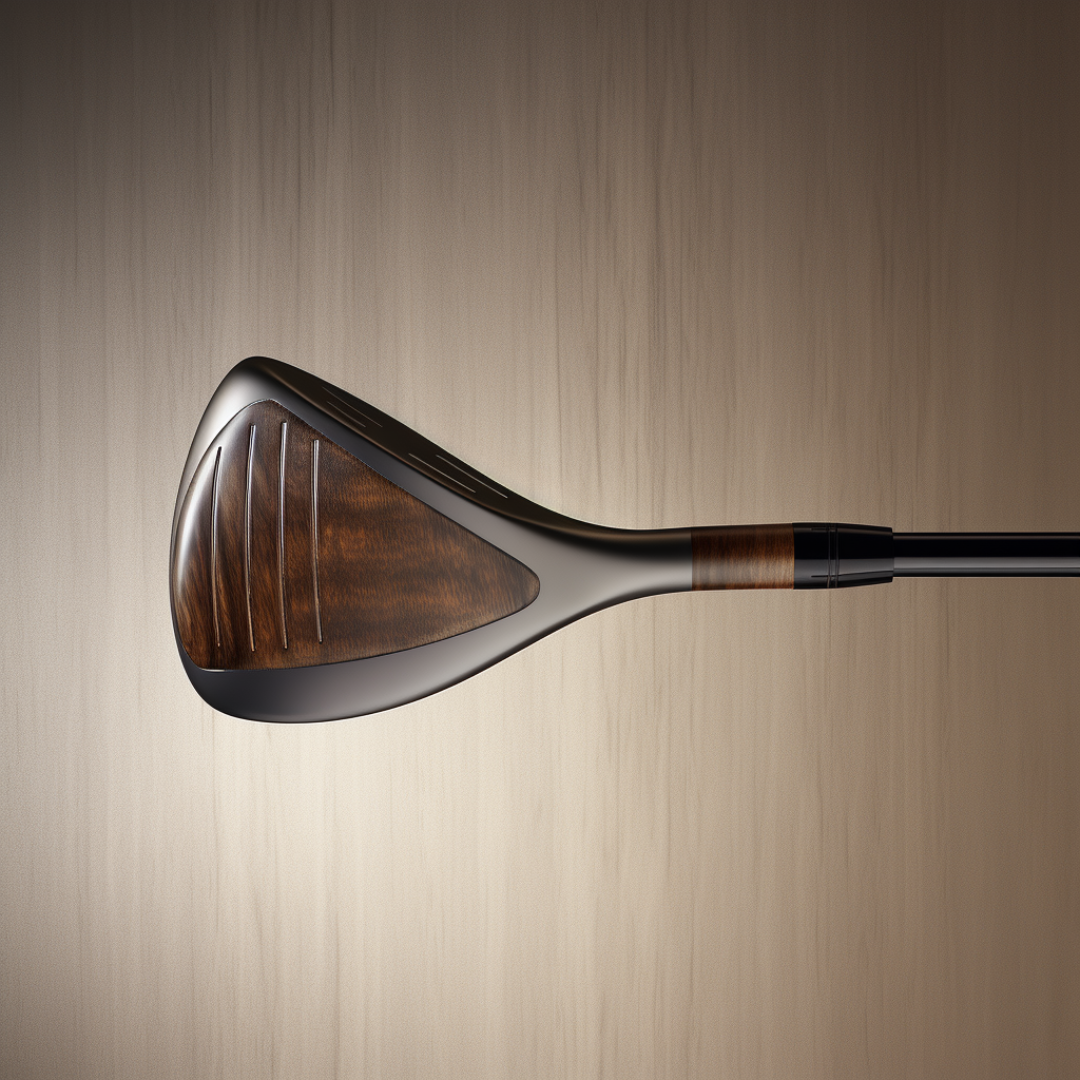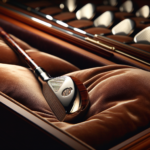
In the world of golf, selecting the right club can greatly impact your overall performance on the course. As you consider which clubs to include in your bag, the 7 wood often becomes a subject of discussion. This article aims to explore the question, “What does a 7 wood replace?” By understanding the role that this club plays and how it compares to others in your arsenal, you can make informed decisions to optimize your game. Whether you are a seasoned golfer or a beginner, join us as we unravel the mysteries of the 7 wood and unlock its potential on the fairways.
Introduction to 7 Wood
Explanation of what a 7 wood is
A 7 wood is a type of golf club that falls under the category of fairway woods. It is designed to be used for shots from the fairway and is typically used to hit the ball a greater distance than an iron. The 7 wood is named after its loft, which refers to the angle of the clubface. In the case of a 7 wood, the loft is usually around 21 to 22 degrees, making it a versatile club for various types of shots.
Overview of its features and uses
The 7 wood is known for its forgiveness and ease of use. It has a larger clubhead compared to irons, which provides a larger sweet spot and makes it more forgiving for off-center hits. This allows players to achieve better distance and accuracy, especially for players who struggle with long irons. The 7 wood can be used in a variety of situations, such as hitting off the fairway, rough, or even from the tee on shorter par-3 holes. Its versatility makes it a valuable addition to a golfer’s bag.
Understanding Golf Club Numbering
Explanation of how golf clubs are numbered
Golf clubs are numbered based on the loft angle of the clubface. Loft refers to the angle between the face of the club and the vertical plane. The higher the loft angle, the higher the trajectory of the ball. The numbering system typically starts with the driver, which has the lowest loft angle among clubs, and moves up to higher numbers for clubs with higher loft angles. Each club is designed to hit the ball a different distance and trajectory, allowing golfers to choose the appropriate club for each shot.
Different types of clubs and their corresponding numbers
In addition to the driver, which is usually marked as a 1 wood, golf clubs are categorized into different types, including woods, irons, wedges, and putters. Fairway woods, such as the 7 wood, are typically numbered from 3 to 9, with the lower numbers having lower loft angles and longer distances. Irons are numbered from 3 to 9 as well, with the lower numbers having less loft and longer distance. Wedges usually have higher loft angles and are numbered differently, such as pitching wedge (PW), gap wedge (GW), sand wedge (SW), and lob wedge (LW). Putters are designed specifically for putting on the green and do not have a numbered loft.
7 Wood vs Other Fairway Woods
Comparison of 7 wood with other fairway woods
When comparing a 7 wood to other fairway woods, such as a 3 wood or 5 wood, the main difference lies in the loft angle and distance. While a 3 wood typically has a loft angle of around 15 degrees and a 5 wood around 18 degrees, the 7 wood’s loft angle is around 21 to 22 degrees. This higher loft allows for a higher trajectory and better control, making it easier to achieve accuracy and distance. The 7 wood is often chosen by players who struggle with longer fairway woods but still want the benefits of a fairway wood.
Advantages and disadvantages of using a 7 wood
One of the advantages of using a 7 wood is its forgiveness. The larger clubhead provides a larger sweet spot, reducing the chances of mishits and increasing the likelihood of producing straighter shots. The higher loft angle also allows for better control, making it easier to hit shots accurately. However, one potential disadvantage of using a 7 wood is that it may not cover as much distance as a lower-numbered fairway wood. Golfers who prefer maximum distance may find a 3 wood or 5 wood more suitable for their needs.
Situations where a 7 wood performs better than other fairway woods
A 7 wood performs exceptionally well in certain situations. For example, when facing a long par-3 hole, opting for a 7 wood instead of an iron can provide better distance and height to carry the ball to the green. Additionally, players who struggle to consistently hit longer fairway woods may find a 7 wood to be a more reliable and accurate option off the fairway or rough. The higher loft angle of the 7 wood helps to get the ball airborne more easily, making it ideal for shots from challenging lies or hitting around obstacles.
The Role of a 7 Wood in a Golfer’s Bag
Importance of club selection in golf
Club selection is a crucial aspect of golf strategy. Choosing the right club for each shot can significantly impact a golfer’s performance. Different clubs are designed to produce varying distances, trajectories, and levels of control. Having a well-thought-out selection of clubs in one’s bag allows a golfer to adapt to different situations on the course and optimize their chances of success.
Explanation of how a 7 wood fits into a golfer’s strategy
A 7 wood plays a significant role in a golfer’s bag by providing a versatile and reliable option for longer shots. It bridges the gap between longer fairway woods, like the 3 wood or 5 wood, and mid- to long-irons. With its higher loft angle, the 7 wood excels in situations where accuracy, control, and a higher trajectory are desired. It can be particularly useful for shots from the fairway, rough, or even as a substitute for longer irons. Including a 7 wood in your bag ensures that you have a dependable club for various scenarios.
Typical distances covered by a 7 wood
The distances covered by a 7 wood can vary depending on several factors, including a golfer’s swing speed, technique, and course conditions. On average, a well-struck 7 wood can carry the ball approximately 160 to 190 yards. The roll after landing can add an additional 10 to 20 yards. However, it is important to keep in mind that distance can vary significantly based on individual circumstances. Golfers should spend time on the practice range to understand their own distance capabilities with a 7 wood and adjust their club selection accordingly.
Replacing Long Irons with a 7 Wood
Challenges of using long irons
Long irons, typically numbered 3 to 5, can pose challenges for many golfers. Due to their lower loft angles and smaller clubheads, long irons require precise ball striking to achieve desired results. They are generally more difficult to hit consistently and often require higher swing speeds to obtain optimal distance. Long irons are notorious for being less forgiving on mishits, resulting in shots that tend to fall short, lack accuracy, or have insufficient height to clear obstacles.
Advantages of replacing long irons with a 7 wood
Replacing long irons with a 7 wood offers several advantages. Firstly, the larger clubhead of the 7 wood provides a larger sweet spot, making it more forgiving and increasing the chances of producing straighter shots. Secondly, the higher loft angle of the 7 wood allows for easier launch and higher trajectories, enabling the ball to carry over hazards and land more softly on the green. Finally, the 7 wood offers a more consistent distance and accuracy for golfers who struggle with long irons, providing improved confidence on the course.
Improved accuracy and distance with a 7 wood
By replacing long irons with a 7 wood, golfers can expect improved accuracy and distance. The larger clubhead and forgiveness of the 7 wood help in reducing mishits and promoting straighter shots. This improved accuracy translates to more reliable distances, allowing golfers to plan and execute shots with greater confidence. Additionally, the higher loft angle of the 7 wood contributes to a higher launch angle and increased carry distance, providing better chances of clearing hazards and reaching the desired target.
Replacing Hybrids or Fairway Woods with a 7 Wood
Comparison of hybrids, fairway woods, and a 7 wood
Hybrids, fairway woods, and a 7 wood serve different purposes in a golfer’s bag. Hybrids, also known as rescue clubs, are designed to replace long irons and provide a combination of the characteristics of both irons and fairway woods. They have a smaller clubhead compared to fairway woods but offer more forgiveness than long irons. Fairway woods, on the other hand, are designed for maximum distance from the fairway or tee and have larger clubheads and lower loft angles than hybrids. A 7 wood falls into the fairway wood category but provides a higher loft angle and more forgiveness compared to lower-numbered fairway woods.
Benefits of using a 7 wood instead of hybrids or fairway woods
Using a 7 wood instead of hybrids or fairway woods offers several benefits. Firstly, the 7 wood’s higher loft angle allows for improved control and accuracy compared to lower-numbered fairway woods. This makes it a suitable option for golfers who struggle to consistently launch low-lofted fairway woods off the ground. Secondly, the larger clubhead of the 7 wood provides a larger sweet spot and greater forgiveness compared to hybrids, making it easier to hit solid shots. Lastly, the 7 wood can offer a more consistent distance and trajectory, bridging the gap between fairway woods and mid-irons.
Considerations for golfers with swing characteristics
When deciding whether to replace hybrids or fairway woods with a 7 wood, it is essential to consider individual swing characteristics. Golfers with slower swing speeds may find a 7 wood more suitable due to its higher loft angle and forgiveness, allowing for easier and higher launch angles. On the other hand, golfers with faster swing speeds may prefer fairway woods or hybrids for their potential to generate greater distance. It is recommended to experiment with different club options and seek advice from a golf professional to determine the most appropriate club for individual swing mechanics.
7 Wood as a Versatile Club
Exploring the versatility of a 7 wood
The 7 wood is a versatile club that can be used in various situations on the golf course. Its higher loft angle and forgiveness make it suitable for shots from the fairway, rough, and even tight lies. Additionally, the 7 wood can be utilized for approach shots to the green, replacing long irons to achieve better distance and control. Its versatility allows golfers the option to adapt to different course conditions and shot requirements, providing increased flexibility in shot selection and overall game strategy.
Different shot types achievable with a 7 wood
With a 7 wood, golfers can execute different shot types to suit various course scenarios. The club’s higher loft angle allows for high trajectory shots, making it effective for hitting the ball over obstacles or carrying it onto elevated greens. The 7 wood can also be used for lower trajectory shots when needed, such as when playing against strong wind or when trying to keep the ball under tree branches. Golfers can experiment with different ball positions, stances, and swings to master the different shot types achievable with a 7 wood.
Situational advantages of a 7 wood
The situational advantages of a 7 wood arise from its unique characteristics. In situations where accuracy and control are of utmost importance, such as when hitting from challenging lies in the rough or navigating tight fairways, the 7 wood’s forgiveness and higher loft angle can provide significant benefits. Additionally, when facing long approach shots to the green, especially from a distance where long irons may not deliver satisfactory results, the 7 wood offers precise distance control and increased likelihood of achieving optimal landing on the green.
Club Selection Strategies for Different Skill Levels
Factors to consider when choosing clubs
When selecting clubs, different factors come into play. Key considerations include a golfer’s skill level, swing speed, preference for distance or accuracy, and course conditions. Skill level affects the golfer’s ability to consistently strike the ball, while swing speed can impact the launch angle and distance achieved with each club. Additionally, golfers may prioritize either distance or accuracy depending on their playing style. Lastly, course conditions, such as wind strength or strategically placed hazards, can influence club selection.
Recommended club selection strategies for beginners
For beginners, it is recommended to prioritize forgiveness and ease of use when selecting clubs. This often means choosing clubs with higher loft angles and larger clubheads, like a 7 wood, which provide increased forgiveness and greater margin for error on mishits. Additionally, beginners should focus on clubs that promote a higher launch angle to help get shots airborne easily. This combination of forgiveness, ease of use, and higher launch assists beginners in gaining confidence and improving their overall game.
Club selection strategies for intermediate and advanced players
Intermediate and advanced players have usually developed a more consistent swing and greater understanding of their game. They may opt to include a 7 wood in their bag to enhance versatility and address specific shots that require higher trajectory and control. These players may consider factors like course layout, shot requirements, and their own strengths and weaknesses when selecting clubs. It is essential for intermediate and advanced players to spend time practicing with different clubs to determine which ones provide the desired results in specific situations.
Considerations for Personal Preference and Playstyle
Understanding the importance of personal preference
Personal preference plays a significant role in club selection. Golfers have different preferences when it comes to the feel, feedback, and visual appearance of clubs. Some golfers prefer the confidence-inspiring look of larger clubheads, while others may gravitate towards more compact designs. It is important to consider personal preference when selecting a 7 wood or any other club, as the golfer’s confidence and comfort with the club greatly impact performance on the course.
Factors to consider based on playstyle
Playstyle is another crucial aspect to consider when choosing clubs. Golfers with a more aggressive playstyle may lean towards clubs that offer greater distance potential, such as lower-lofted fairway woods. On the other hand, golfers who prioritize accuracy and control may find a 7 wood more suitable due to its forgiving nature and higher launch angle. It is important to evaluate and understand one’s own playstyle to make an informed decision when selecting clubs, as it helps optimize performance based on individual strengths and preferences.
Customizing club choice based on individual preferences
The beauty of golf is that it allows for customization to match individual preferences. Golfers can explore various club options, including different shaft flexes, grip sizes, and clubhead designs, to find the perfect fit for their game. It is advisable to visit a professional club fitter who can assist in analyzing swing characteristics, providing recommendations, and customizing clubs based on individual preferences. These personalized adjustments can have a significant impact on a golfer’s performance and overall enjoyment of the game.
Conclusion
Summary of the article
In conclusion, a 7 wood is a versatile fairway wood that provides golfers with a reliable option for various shots. Its higher loft angle and forgiveness make it a suitable replacement for long irons, offering improved accuracy, distance, and control. When compared to hybrids or fairway woods, the 7 wood’s unique characteristics provide distinct advantages, especially for golfers who struggle with lower-numbered fairway woods or desire higher trajectories. As part of a golfer’s bag, the 7 wood enhances versatility and allows for adaptability to different course conditions and shot requirements.
Final thoughts on choosing the right club, including a 7 wood
Choosing the right club, including a 7 wood, involves considering factors such as personal preference, playstyle, skill level, and course conditions. While the 7 wood offers numerous benefits, it is important for golfers to experiment with different clubs, seek professional advice, and consider individual swing characteristics to make an informed decision. By carefully selecting the appropriate clubs for their game, golfers can optimize their performance, improve confidence, and enjoy the game to its fullest extent.





